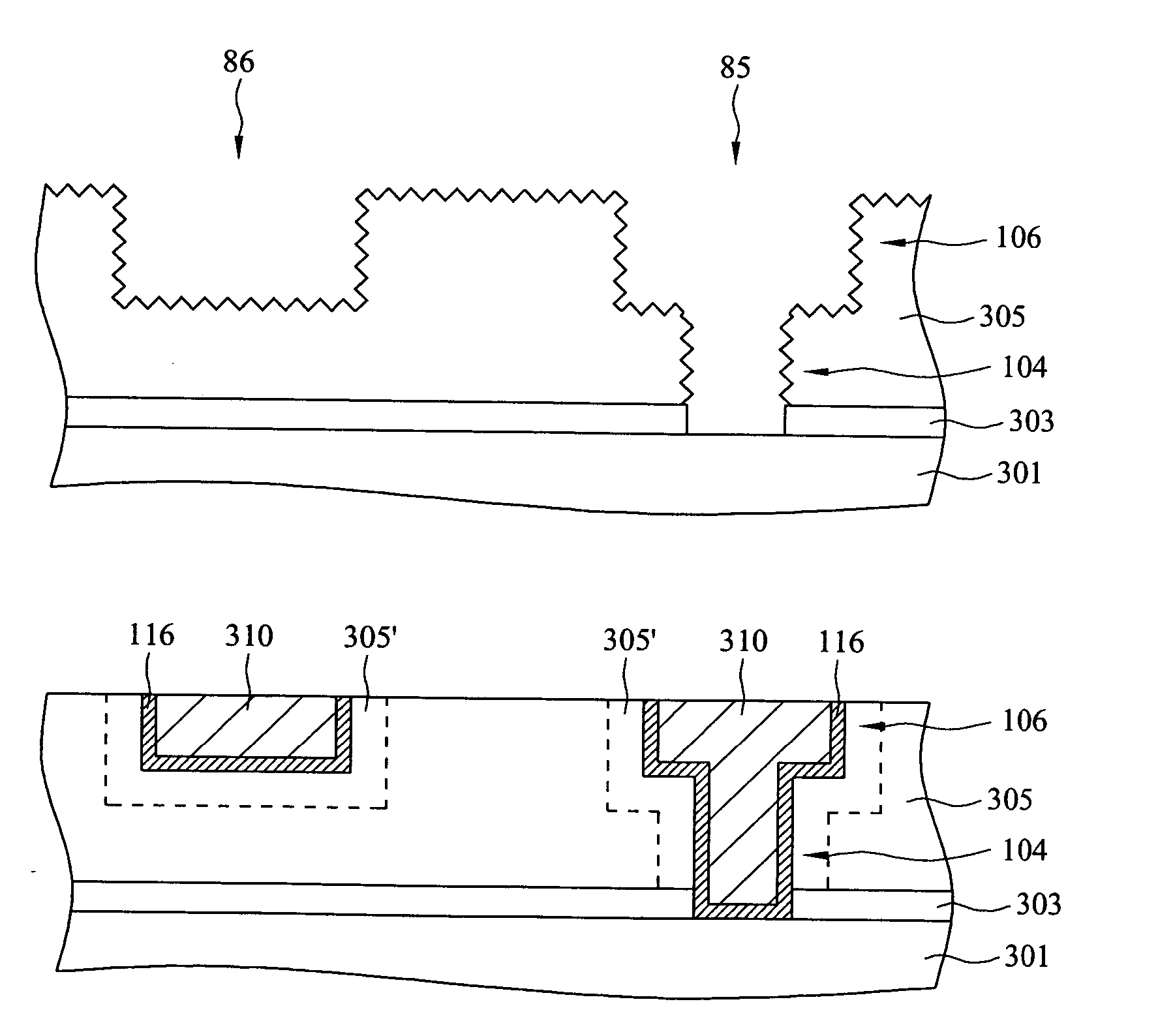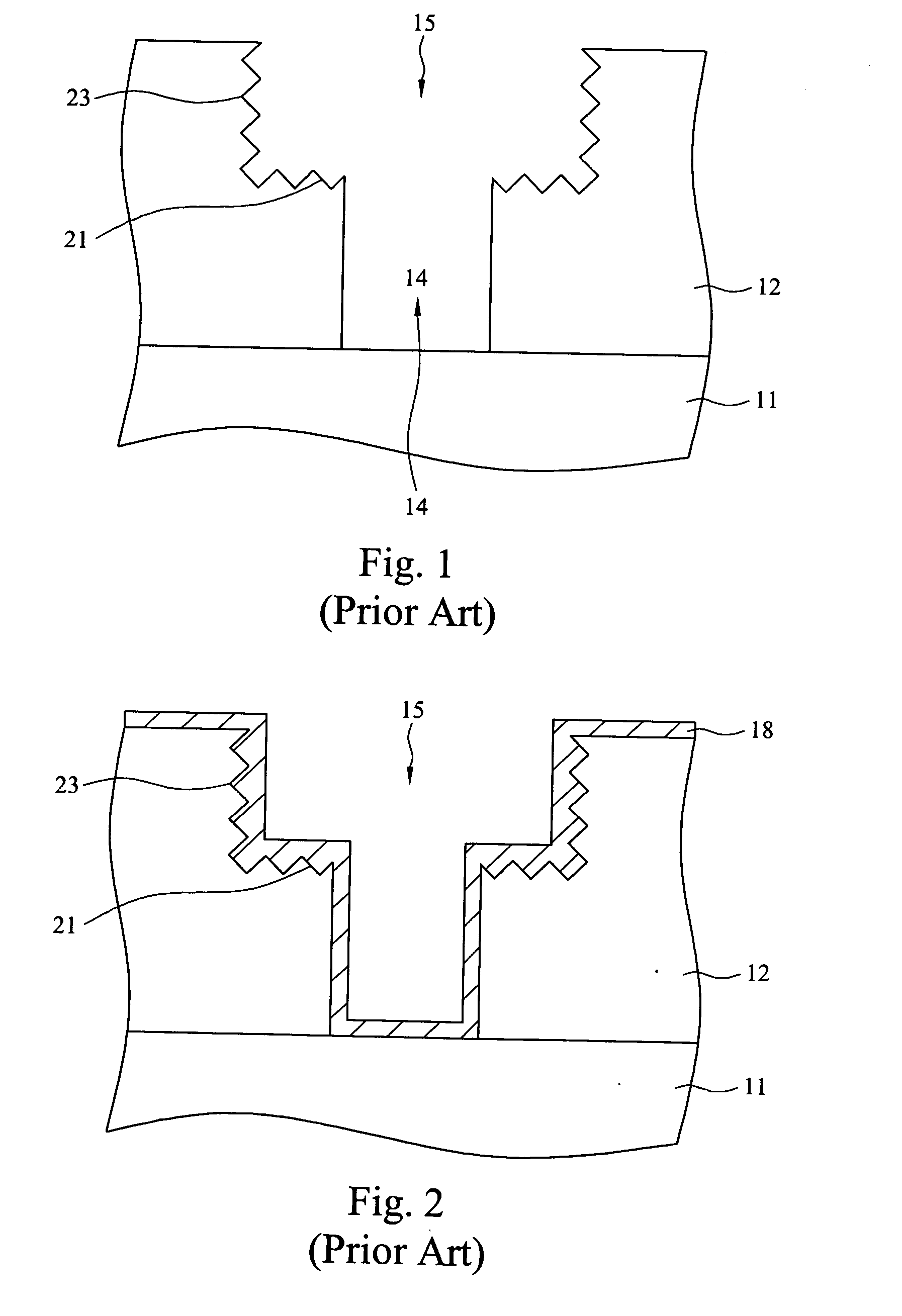Sealing pores of low-k dielectrics using CxHy
a dielectric and low-k technology, applied in the field of forming and processing of porous, low-k dielectrics, can solve the problems of plasma damage, low-k materials are susceptible to damage, and low-k materials present problems during processing
- Summary
- Abstract
- Description
- Claims
- Application Information
AI Technical Summary
Benefits of technology
Problems solved by technology
Method used
Image
Examples
Embodiment Construction
[0028] The operation and fabrication of the presently preferred embodiments are discussed in detail below. However, the embodiments and examples described herein are not the only applications or uses contemplated for the invention. The specific embodiments discussed are merely illustrative of specific ways to make and use the invention, and do not limit the scope of the invention or the appended claims.
[0029] This invention relates generally to semiconductor device manufacturing and more particularly to the formation and processing of porous, low-k dielectrics. The low-k dielectrics may include films or layers, but embodiments are not limited to these morphologies. The present invention will now be described with respect to preferred embodiments in a specific context, namely the creation of copper conductive lines and vias in the damascene process. It is believed that embodiments of this invention are particularly advantageous when used in this process. It is further believed that ...
PUM
| Property | Measurement | Unit |
|---|---|---|
| dielectric constants | aaaaa | aaaaa |
| thickness | aaaaa | aaaaa |
| dielectric constant | aaaaa | aaaaa |
Abstract
Description
Claims
Application Information
 Login to View More
Login to View More - R&D
- Intellectual Property
- Life Sciences
- Materials
- Tech Scout
- Unparalleled Data Quality
- Higher Quality Content
- 60% Fewer Hallucinations
Browse by: Latest US Patents, China's latest patents, Technical Efficacy Thesaurus, Application Domain, Technology Topic, Popular Technical Reports.
© 2025 PatSnap. All rights reserved.Legal|Privacy policy|Modern Slavery Act Transparency Statement|Sitemap|About US| Contact US: help@patsnap.com



